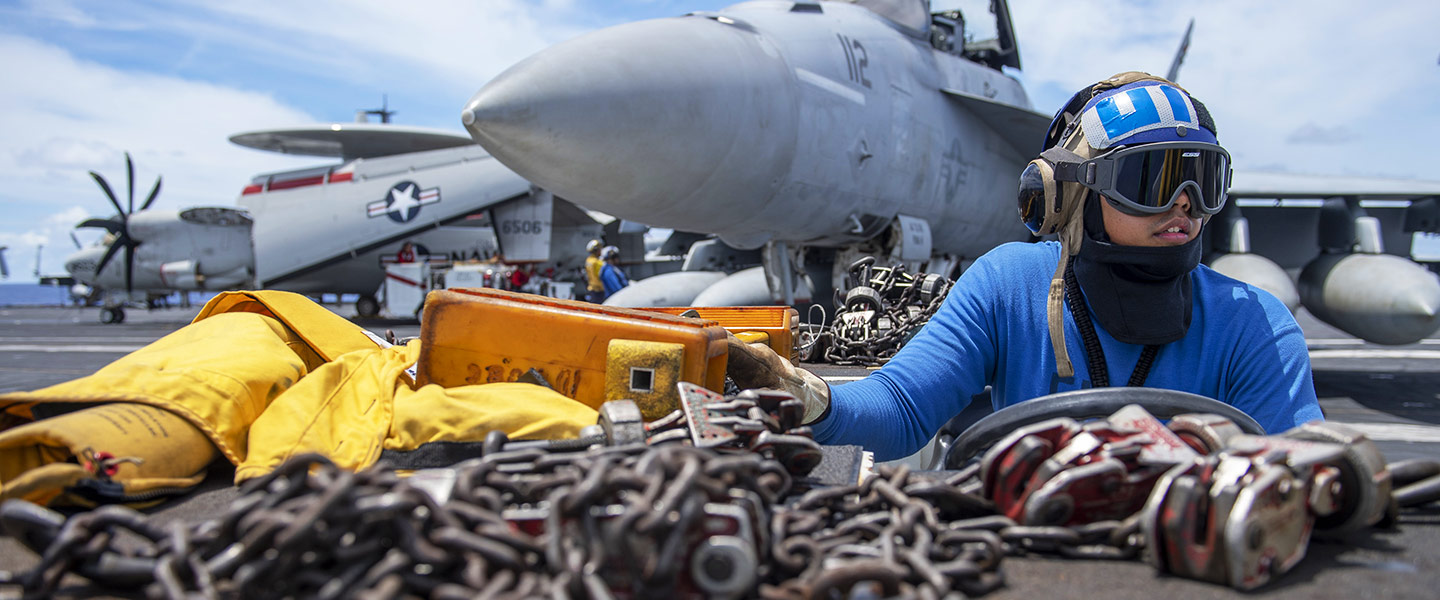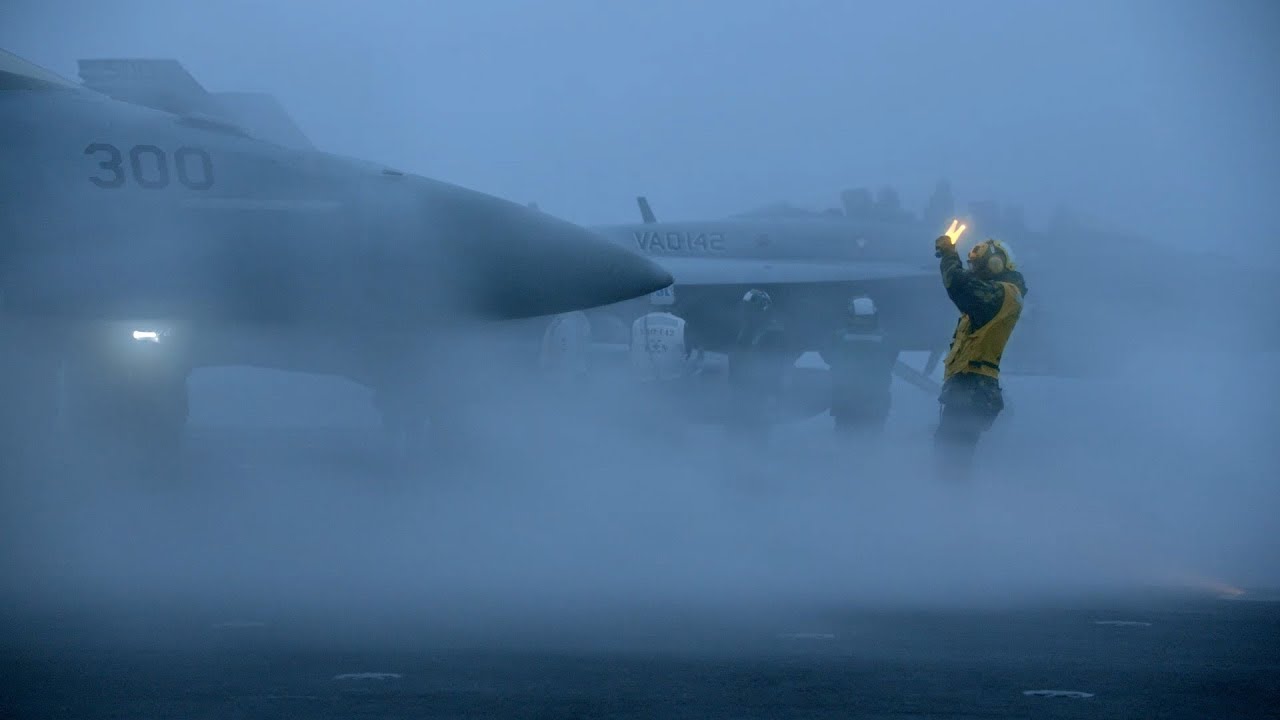What to Expect
More Information
Responsibilities
Aviation Boatswain’s Mate – Aircraft Handling (ABH) Sailors supervise the movement of Naval aircraft and perform rescue duties when necessary. In this role, specific responsibilities may include:
- Assisting with the launch and recovery of aircraft
- Spotting and securing aircraft and equipment
- Performing crash rescue and crash removal duties in connection with aircraft launch and recovery
- Firefighting and damage control duties
- Operating and maintaining ground-handling equipment used for moving and hoisting aircraft
Work Environment
Most of the work in this rating is performed outdoors on the flight decks of amphibious and aircraft carriers, in all climates and conditions, including hazardous environments. The work is fast-paced and ABHs typically work closely with others in aviation ratings. You will not spend your entire career at sea, you may also work with an aircraft squadron during a shore duty rotation.
Training & Advancement
Upon completion of initial training at Recruit Training Command Great Lakes (known as Boot Camp), you’ll report for specialized training, including:
Class "A" Technical School (4 weeks) in Pensacola, FL, for training on basic skills and theories in aviation.
After you complete your training, you may be assigned to an aircraft carrier or Naval air station in the United States or abroad. You may also be assigned to other types of ships with airplanes or helicopters.
Promotion opportunities are regularly available but competitive and based on performance. For example, you may have the opportunity to earn the advanced AB rating that includes supervising all Aviation Boatswain’s Mates specialties.
Advanced Training
Advanced “C School” training as an Aviation Boatswain’s Mate may also be available during later stages of your career. For those with further leadership aspirations and a college degree, Officer roles may be available, providing opportunities to lead and train others.
Post-Service Opportunities
Specialized training received and work experience gained in the course of service can lead to valuable credentialing and occupational opportunities in related fields in the civilian world, such as employment with airlines, airports, aircraft manufacturers and more.
Education Opportunities
Beyond offering access to professional credentials and certifications, Navy technical and operational training as an Aviation Boatswain’s Mate can translate to credit hours toward a bachelor’s or associate degree through the American Council on Education.
You may also continue your education through undergraduate degree opportunities like the Navy College Program and Tuition Assistance and the Post-9/11 GI Bill.
Qualifications & Requirements
A high-school diploma or equivalent is required to become an Enlisted Sailor and an Aviation Boatswain’s Mate. You must also be a U.S. citizen eligible for security clearance.
To qualify for placement in the ABH rating, individuals should work well with a team, be competent with tools and equipment, and possess a keen awareness of the need for safety information and procedures in order to complete a job.
You should also be physically fit, have good use of your hands, and have normal hearing, color and depth perception.
General qualifications may vary depending upon whether you’re currently serving, whether you’ve served before or whether you’ve never served before.
Part-Time Opportunities
Serving part-time as a Navy Reserve Sailor, your duties will be carried out during your scheduled drilling and training periods. During monthly drilling, Aviation Boatswain’s Mates in the Navy Reserve typically work at a location close to their homes.
For annual training, you may serve anywhere in the world, including locations in the U.S., at bases overseas, or in areas where humanitarian needs are great.
Take a moment to learn more about the general roles and responsibilities of Navy Reserve Sailors.
Most of what you do in the Navy Reserve is considered training. The basic Navy Reserve commitment involves training a minimum of one weekend a month (referred to as drilling) and two weeks a year (referred to as Annual Training) – or the equivalent of that.
Aviation Boatswain’s Mates in the Navy Reserve serve in an Enlisted role. Before receiving the ongoing professional training that comes with the job, initial training requirements must be met.
For current or former military Enlisted servicemembers, prior experience satisfies the initial Recruit Training requirement, so you will not need to go through Boot Camp again.
For those without prior military experience, you will need to meet the initial Recruit Training requirement by attending Boot Camp in Great Lakes, IL. This training course will prepare you for service in the Navy Reserve and count as your first Annual Training.

































































































































